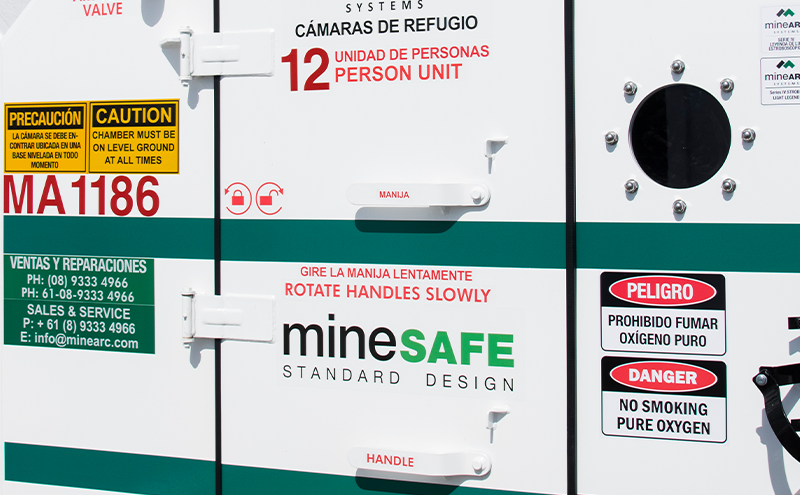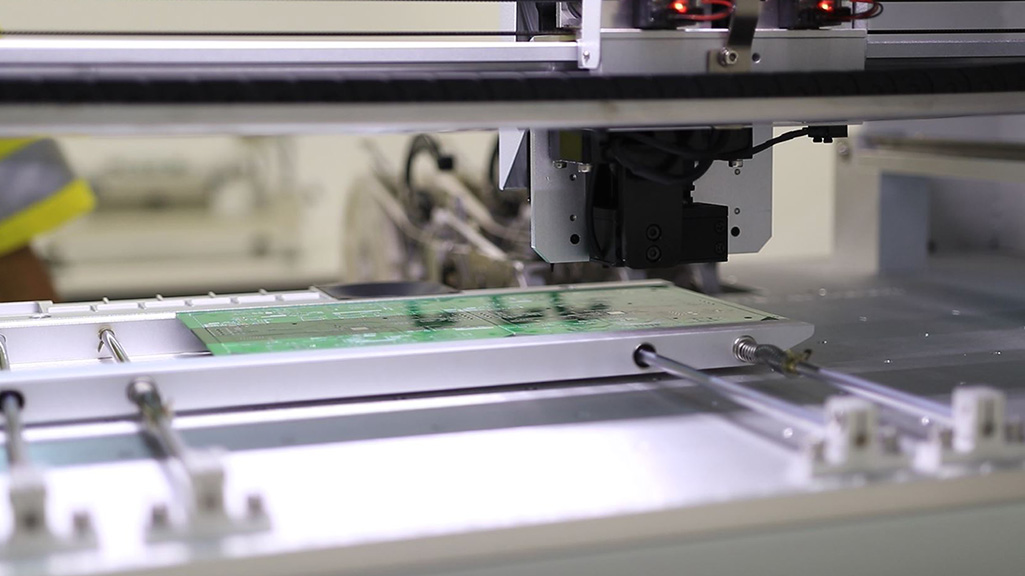Determining the ideal refuge chamber duration in stand-alone mode is an often contested discussion. It poses more questions than answers without concise agreement by governments and industry bodies worldwide.
Mining refuge chamber duration should be determined on a risk-based approach. Every mine, construction site, plant, or facility is different and should be assessed based on its unique conditions, and the overall emergency response plan.
Refuge Chamber Duration in Stand-Alone Mode
A chamber’s ‘stand-alone’ duration needs to consider the resources available; at the very least it must factor in escape routes, equipment, as well as the skills and capabilities of Emergency Response Teams (ERT).
What is stand-alone mode?
Stand-alone mode occurs when the safe haven is cut from external air and power sources, resulting in using a finite source of battery backup and breathable air. A chamber, while connected to mains power and mine air, can continue to sustain life indefinitely. However, in these instances, the supply of food and water becomes more pressing.
Survivability in an underground refuge chamber focuses on meeting fundamental requirements to sustain life, including maintaining a respirable atmosphere, and habitable environment, as well as the provision of basic needs such as water.
Quarry and underground mining are high-risk businesses. There is a careful balance between emergency preparedness and personnel protection against the costs of over insurance. Each emergency is a unique event, and it is impossible to predict with exactness, the period required to sustain miners before rescue.
Determining Refuge Chamber Duration
Refuge Chamber Duration for Metalliferous and Non-Metal Mines can range from 24 -96 hours.
Common hazards which can cause the use of a refuge chamber include fires, rockfall, hazardous gases and smoke.
Many countries have adopted the 2013 Western Australian DMP Guidelines for Refuge Chambers in Underground Mines as the global benchmark for underground mining safety standards. These guidelines set the minimum stand-alone refuge chamber duration of 36 hours, based on a worst-case scenario. Necessarily conservative, the period is based on a tyre fire’s immediate and ongoing danger, with additional time for mine rescue teams to act and reach a chamber.
From incidents where reliable information is available worldwide, most chambers are used for a duration between two and ten hours.
However, the set of conditions associated with emergencies is so varied that no clear pattern can be identified to establish an acceptable duration. While longer incidents and extreme cases are less common, they are still prevalent, as recent history has shown with the Copiapó mining accident in 2010 and Beaconsfield, Tasmania in 2006.
Refuge Chamber Duration for Coal Mines can range from 48 – 96 hours.
Common hazards that cause the use of a refuge chamber within the coal industry include fires, explosions, rockfall, hazardous gases and inundation.
Coal mines have significant fuel quantities that can burn for days, so it is suggested the rescue and evacuation strategies should be different from hard rock mining. To provide for an added margin of safety, Mine Safety and Health Administration (MSHA) has determined that it is necessary to require refuge chambers in the United States coal industry to sustain life for a minimum of 96 hours.
A stand-alone duration of 96 hours aims to assist any rescue effort by providing the ERT’s necessary time to reach trapped miners safely. Many variables can significantly affect rescue activities, including the depth of the mine, the geology of the overburden, and the above-ground terrain. Coal mine rescue protocol requires monitoring the mine atmospheres and assessing the risk before mine rescue teams enter and make progressive steps towards trapped miners.
Successful mine rescue progression often requires repairing damaged infrastructure, e.g., roof control systems, and ventilation controls.
To arrive at the 96-hour requirement in this final rule, MSHA reviewed recent and historical data on entrapments. While most safety and health professionals and researchers agree that refuge alternatives can sustain trapped persons, there is no general agreement on the amount of time that the refuge alternative should be capable of supporting miners.
Current Mining Refuge Chamber Legislation
Underground Hard Rock Mining
Western Australia: 36 Hours
Department of Mines and Petroleum, 2013, Refuge Chambers In Underground Mines – Guideline
“Duration of independent services and power
A refuge chamber should be capable of 36 hours of self-sustained operation to allow sufficient time for a rescue to be completed.
Refuge chambers are expected to support a full complement of occupants while operating in stand-alone mode under the worst-case scenario. Such a situation is provided by a large rubber-tyred vehicle catching fire when travelling in the main intake airway. The danger of re-ignition, a tyre explosion or both may persist for up to 24 hours, and it is deemed unsafe to approach the vehicle during this period.
Although it may be feasible for mine rescue teams to work their way past the burned-out unit and bring the occupants of the refuge chamber or chambers out on foot, it should not be assumed that this would be possible in all cases. One or more of the occupants may be unable to walk, and vehicular access may be essential. An additional 12 hours is a reasonable safety margin to allow for the clearance of any obstruction and restoration of normal services.”
Chile: 48 Hours
Ministerio de Mineria, 2004, Decreto Supremo No.132
“Decreto 34, MINERÍA Art. ÚNICO, D.O. 14.06.2013
Artículo 610
En la situación señalada en el artículo precedente, el Servicio podrá exigir también la construcción de refugios de acuerdo con el avance y características de la faena, pudiendo ser estocadas de seguridad, contenedores o construcciones similares.
Estos refugios deberán contar con los elementos indispensables que garanticen la sobrevivencia de las personas afectadas por algún siniestro, por un período mínimo de 48 horas, tales como alimentos no perecibles, agua potable fresca, sistema de comunicación con la superficie o áreas contiguas, elementos de primeros auxilios y manuales explicativos para auxiliar a lesionados.”
Decree 34, MINING Art. UNIQUE, D.O. 06/14/2013
Article 610
“In the situation indicated in the preceding article, the Service may also require the construction of shelters in accordance with the progress and characteristics of the task, and maybe safety lunches, containers or similar constructions.
These shelters must have the essential elements that guarantee the survival of people affected by a disaster, for a minimum period of 48 hours, such as non-perishable food, fresh drinking water, communication system with the surface or contiguous areas, elements of first aid and explanatory manuals to help injured people.”
Ontario, Canada: Minimum 8-hour duration and up to 24 hours depending on the mine design
Mines & Aggregates Safety & Health Association, 1998, Guidelines For Mine Rescue Refuge Stations
“Duration of Occupancy
This may be the controlling factor in the design of many refuge stations. A minimum of 8 hour occupancy time is suggested. In other cases, this may be longer, up to 24 hours, depending on the location; for example, in the case of single access to a refuge station.
The maximum occupancy time is considered to be that time from the start of occupancy until an upper limit of 3% carbon dioxide and a lower limit of 16.25% oxygen is reached.”
Turkey: 36 Hours
Ministry of Labor and Social Security, 2017, Refuge Chambers Installed In Underground Mine Workplaces
“Sığınma odasının teknik özellikleri
MADDE 6
… (3) Sığınma odalarının kullanılması durumunda içinde bulunan kişilere en az 36 saat yetebilecek solunabilir hava sağlanır. Maden basınçlı havasının kesilmesi durumunda içeride güvenilir oksijen kaynakları bulundurulur. Sığınma odasına oksijen sağlanırken, kişilerin sağlık ve güvenliğini tehdit etmeyecek şekilde karbondioksit ve karbonmonoksitin de seyreltilmesi veya filtrelenmesi sağlanır.
(4) Odalarda; klima, hava temizleme, nem alma, aydınlatma, uyarı ışıkları, haberleşme, gaz izleme sistemleri ve sığınma odasındaki diğer elektrikli ekipmanlar için en az 36 saate kadar yedek enerji kaynağı bulundurulur.”
“Technical specifications of refuge chambers;
ITEM 6
… (3) In case of using the refuge chambers in emergency situation, chamber should provide breathable air to refuges minimum 36 hours. In case of mine pressured air failure, there must be reliable oxygen sources inside the chamber. While providing oxygen to refuges, both CO2 and CO gasses must be filtered-scrubbed by the system without causing any danger to human health.
(4) Air conditioning, air scrubbing, moisture removing, lighting, warning lights, communication and gas monitoring systems must be powered minimum 36 hours with back-up power source .”
Coal Mining
United States: 96 hours
Mine Safety and Health Administration, 2008, 30 CFR Parts 7 and 75 Refuge Alternatives for Underground Coal Mines; Final Rule
“MSHA developed this final rule based on Agency data and experience, NIOSH recommendations, research on available and developing technology, state regulations, and comments and testimony from the mining community.
The final rule includes requirements for—
- Testing and approval of refuge alternatives and components of refuge alternatives;
- Assuring that refuge alternatives are readily available, capable of sustaining trapped miners for 96 hours, and maintained in operating condition; and
- Training miners to locate, deploy and use, maintain, and transport refuge alternatives.”
Peru: 72 Hours
Ministry of Energy and Mines, 2010, Decreto Supremo que aprueba el Reglamento de Seguridad y Salud Ocupacional y otras medidas complementarias en minería
“Artículo 138º.
En toda mina subterránea se construirá estaciones de refugio para que, en caso de siniestro, el personal tenga dónde aislarse y quede provisto de aire, agua potable -en una cantidad mínima de consumo para setenta y dos (72) horas- y un sistema de comunicación adecuado para facilitar su salvataje. El personal será instruido sobre la ubicación de dichas estaciones.”
“Article 138º.
In every underground mine, refuge stations will be built so that, in the event of a disaster, the personnel will have to isolate themselves and be provided with air, potable water -in a minimum amount of consumption for seventy-two (72) hours- and a system of adequate communication to facilitate your rescue. The personnel will be instructed on the location of said stations.”
Mexico: 96 Hours
NORMA Official Mexicana, 2012, NORMA Official Mexicana NOM-023-STPS-2012, Underground Mines and Opencast Mines – Conditions of Security and Health at Work
“8.14.5 Los refugios deberán estar provistos de los elementos indispensables a que se refiere el numeral 8.14.6, de tal manera que garanticen la sobrevivencia de los trabajadores en su interior, por un periodo de al menos 96 horas.”
“8.14.5 The shelters must be provided with the essential elements referred to in the numeral 8.14.6, in such a way as to guarantee the survival of the workers inside it, for a period of minus 96 hours”
References
- Government of Western Australia, Department of Mines and Petroleum, 2013, “Refuge Chambers In Underground Mines –Guideline” http://www.dmp.wa.gov.au/Safety/Refuge-chambers-in-underground-7896.aspx
- Biblioteca del Congreso Nacional de Chile/ BCN, 2013, “Aprueba Reglamento De Seguridad Minera” https://www.leychile.cl/Navegar?idNorma=221064&r=1
- Workplace Safety North, Mines & Aggregates Safety & Health Association, 1998, “Guidelines for Mine Rescue Refuge Stations” https://www.workplacesafetynorth.ca/sites/default/files/Guidelines%20for%20Mine%20Rescue%20Refuge%20Stations.pdf
- Ministry of Labor and Social Security, 2017, Refuge Chambers Installed In Underground Mine Workplaces http://www.basbakanlik.gov.tr
- Mine Safety and Health Administration, 2008, 30 CFR Parts 7 and 75 Refuge Alternatives for Underground Coal Mines; Final Rule https://www.gpo.gov/fdsys/pkg/FR-2013-08-08/pdf/2013-19028.pdf
- NORMA Official Mexicana, 2012, NORMA Official Mexicana NOM-023-STPS-2012, Underground Mines and Opencast Mines – Conditions of Security and Health at Work
- http://www.stps.gob.mx/bp/secciones/dgsst/normatividad/normas/Nom-023.pdf
- Ministry of Energy and Mines, 2010, Decreto Supremo que aprueba el Reglamento de Seguridad y Salud Ocupacional y otras medidas complementarias en minería
- http://www.minem.gob.pe/minem/archivos/file/Mineria/LEGISLACION/2010/AGOSTO/DS%20055-2010–EM.pdf







